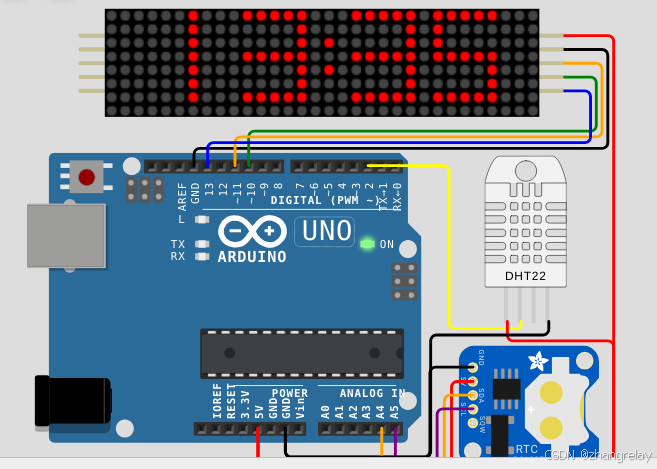一.鼠标轨迹模拟简介
传统的鼠标轨迹模拟依赖于简单的数学模型,如直线或曲线路径。然而,这种方法难以捕捉到人类操作的复杂性和多样性。AI大模型的出现,能够通过深度学习技术,学习并模拟更自然的鼠标移动行为。
二.鼠标轨迹算法实现
AI大模型通过学习大量的人类鼠标操作数据,能够识别和模拟出自然且具有个体差异的鼠标轨迹。以下是实现这一技术的关键步骤:
- 数据收集:收集不同玩家在各种游戏环境中的鼠标操作数据,包括移动速度、停顿、加速度等。
- 模型训练:利用深度学习算法,训练AI模型识别鼠标操作中的模式和规律。
- 轨迹生成:在给定起点和终点的情况下,AI模型能够生成符合人类操作习惯的鼠标轨迹。
三.鼠标轨迹API应用场景
游戏中通过分析玩家的鼠标轨迹,检测是否为脚本,例如:大部分游戏都有数据行为检测!

四.API跨语言平台支持
底层实现采用C/C++语言,利用其高性能和系统级访问能力,开发出高效的鼠标轨迹模拟算法。通过将算法封装为DLL(动态链接库),可以方便地在不同的编程环境中调用,实现跨语言的兼容性。
通过DLL封装,开发者可以在C++、Python、易语言、按键精灵等多种编程语言中使用鼠标轨迹模拟技术。这种封装方式提供了一种简便的接口,使得不同背景的开发者都能够轻松集成和使用这一技术。
五.鼠标轨迹 API 介绍
1.头文件
#ifndef _SN_SDK_H__
#define _SN_SDK_H__
#include <windows.h>
//返回参数
typedef struct SN_RESULT {int code; //错误码,如果为 0 表示成功,否则表示错误号char message[4096]; //错误信息,如果为 "OK" 表示成功,否则返回错误信息
}SN_RESULT;
//坐标参数
typedef struct SN_POINT
{int x; //屏幕坐标,左上角(0,0),右下角(1920,1080 - 以实际屏幕为准)int y; //屏幕坐标,左上角(0,0),右下角(1920,1080 - 以实际屏幕为准)
}SN_POINT;
//轨迹参数
typedef struct SN_POINT_PARAMS
{struct SN_POINT point;//屏幕坐标,左上角(0,0),右下角(1920,1080 - 以实际屏幕为准)int delayTime; //延时时间(单位:毫秒),仅供参考
}SN_POINT_PARAMS;
/*创建句柄
*
* 参数:
* [in] szKey: 卡密(购买卡密:https://shop.4yuns.com/links/7C9F16B7)
* [in] pOnnxFilePath:设置 onnx 模型文件路径,如果设置为 NULL,默认和 DLL文件同级目录
* [out] pResult: 返回错误信息,参数pResult.code(错误码)如果为 0 表示成功,否则表示错误号;
*
* 返回值:成功返回句柄,失败返回NULL
*
*/
HANDLE WINAPI apiSNCreateHandle(char* szKey, char* pOnnxFilePath, SN_RESULT* pResult);
/*获取鼠标移动轨迹
*
* 参数:
* [in] handle: 句柄(通过调用apiSNCreateHandle得到)
* [in] startPoint: 开始坐标,左上角(0,0),右下角(1920,1080 - 以实际屏幕为准)
* [in] endPoint: 结束坐标,左上角(0,0),右下角(1920,1080 - 以实际屏幕为准)
* [out] points: 轨迹数组,如果数组中元素 point 出现(-1,-1),表示鼠标轨迹结束
*
* 返回值:返回参数SN_RESULT.code(错误码)如果为 0 表示成功,否则表示错误号;
*
*/
SN_RESULT WINAPI apiSNMouseMove(HANDLE handle, SN_POINT startPoint, SN_POINT endPoint, SN_POINT_PARAMS* points);
/*获取版本号
*
* 参数:
* [in] handle: 句柄(通过调用apiSNCreateHandle得到)
* [out] szVersion: 版本号
*
* 返回值:返回参数SN_RESULT.code(错误码)如果为 0 表示成功,否则表示错误号;
*
*/
SN_RESULT WINAPI apiSNGetVersion(HANDLE handle, char* szVersion);
/*获取错误信息
*
* 参数:
* [in] handle: 句柄(通过调用apiSNCreateHandle得到)
*
* 返回值:返回参数SN_RESULT.code(错误码)如果为 0 表示成功,否则表示错误号;
*
*/
SN_RESULT WINAPI apiSNGetError(HANDLE handle);
/*释放句柄(内存)
*
* 参数:
* [in] handle: 句柄(通过调用apiSNCreateHandle得到)
*
* 返回值:返回参数SN_RESULT.code(错误码)如果为 0 表示成功,否则表示错误号;
*
*/
SN_RESULT WINAPI apiSNDestroyHandle(HANDLE handle);
#endif // !_SN_SDK_H__
2.cpp文件
'''@SDK功能描述:鼠标轨迹'''import ctypes
import os
import sys# 创建句柄
key = "SNKJuSrrrTnQ5UXYr4zr6XEveL7V2jg2X9h5BHGS5Des" # 字符串
key_bytes = key.encode('utf-8') # 将字符串转换为 bytes#设置模型文件路径
onnx = "d://SNTrack.onnx" # 字符串
onnx_bytes = onnx.encode('utf-8') # 将字符串转换为 bytes# 假设 DLL 文件名为 SNSDK.dll
sn_sdk = ctypes.WinDLL('d://SNSDK.dll')# 定义 SN_RESULT 结构体
class SN_RESULT(ctypes.Structure):_fields_ = [("code", ctypes.c_int),("message", ctypes.c_char * 4096)]# 定义 SN_POINT 结构体
class SN_POINT(ctypes.Structure):_fields_ = [("x", ctypes.c_int),("y", ctypes.c_int)]# 定义 SN_POINT_PARAMS 结构体
class SN_POINT_PARAMS(ctypes.Structure):_fields_ = [("point", SN_POINT),("delayTime", ctypes.c_int)]# 定义函数原型
sn_sdk.apiSNCreateHandle.argtypes = [ctypes.POINTER(ctypes.c_char),ctypes.POINTER(ctypes.c_char), ctypes.POINTER(SN_RESULT)]
sn_sdk.apiSNCreateHandle.restype = ctypes.c_void_psn_sdk.apiSNGetVersion.argtypes = [ctypes.c_void_p, ctypes.POINTER(ctypes.c_char)]
sn_sdk.apiSNGetVersion.restype = SN_RESULTsn_sdk.apiSNMouseMove.argtypes = [ctypes.c_void_p, SN_POINT, SN_POINT, ctypes.POINTER(SN_POINT_PARAMS)]
sn_sdk.apiSNMouseMove.restype = SN_RESULT # 根据实际情况调整sn_sdk.apiSNDestroyHandle.argtypes = [ctypes.c_void_p]
sn_sdk.apiSNDestroyHandle.restype = SN_RESULTresult = SN_RESULT() # 创建 SN_RESULT 实例
handle = sn_sdk.apiSNCreateHandle(key_bytes, onnx_bytes,ctypes.byref(result))
if result.code != 0:message = result.message.decode('gbk', errors='replace').strip()print("Result message:", message)
else:print("Handle created successfully")# 获取版本号
version = ctypes.create_string_buffer(4096)
version_result = sn_sdk.apiSNGetVersion(handle, version)
if version_result.code != 0:message = result.message.decode('gbk', errors='replace').strip()print("Result message:", message)
else:message = result.message.decode('gbk', errors='replace').strip()print("Result message:", version.value.decode())# 获取轨迹
# 定义开始和结束坐标
start_point = SN_POINT(100, 100)
end_point = SN_POINT(800, 800)# 假设返回的轨迹点数量
num_points = 4096# 创建一个数组来接收轨迹点
points_array = (SN_POINT_PARAMS * num_points)()# 调用 apiSNMouseMove 函数
move_result = sn_sdk.apiSNMouseMove(handle, start_point, end_point, points_array)# 检查结果
if move_result.code != 0:message = result.message.decode('gbk', errors='replace').strip()print("Result message:", message)
else:# 遍历并打印每个点for i in range(num_points):if points_array[i].point.x == -1 and points_array[i].point.y == -1:break # 轨迹结束print(f"Point {i}: ({points_array[i].point.x}, {points_array[i].point.y},{points_array[i].delayTime})") # X坐标 ,Y坐标 ,延时时间# 释放句柄
destroy_result = sn_sdk.apiSNDestroyHandle(handle)
if destroy_result.code != 0:message = result.message.decode('gbk', errors='replace').strip()print("Result message:", message)
else:print("Handle destroyed successfully")'''
输出鼠标轨迹如下:Handle created successfully
Result message: 1.0
Point 0: (100, 100,0)
Point 1: (100, 98,10)
Point 2: (103, 98,15)
Point 3: (111, 98,16)
Point 4: (116, 101,15)
Point 5: (122, 104,2)
Point 6: (129, 107,13)
Point 7: (135, 109,2)
Point 8: (144, 112,14)
Point 9: (155, 117,2)
Point 10: (167, 123,14)
Point 11: (180, 128,2)
Point 12: (193, 134,13)
Point 13: (209, 138,2)
Point 14: (225, 144,13)
Point 15: (238, 149,5)
Point 16: (254, 157,10)
Point 17: (269, 162,5)
Point 18: (282, 168,11)
Point 19: (298, 175,5)
Point 20: (311, 180,10)
Point 21: (326, 185,6)
Point 22: (341, 193,9)
Point 23: (369, 211,15)
Point 24: (396, 231,16)
Point 25: (419, 251,16)
Point 26: (442, 270,16)
Point 27: (461, 285,17)
Point 28: (481, 300,15)
Point 29: (491, 311,15)
Point 30: (502, 319,2)
Point 31: (513, 329,14)
Point 32: (523, 343,2)
Point 33: (535, 355,14)
Point 34: (546, 369,0)
Point 35: (558, 383,15)
Point 36: (570, 397,2)
Point 37: (582, 411,13)
Point 38: (596, 427,2)
Point 39: (608, 443,14)
Point 40: (620, 459,5)
Point 41: (633, 476,10)
Point 42: (645, 490,5)
Point 43: (656, 503,11)
Point 44: (666, 515,5)
Point 45: (675, 527,11)
Point 46: (684, 538,5)
Point 47: (694, 551,11)
Point 48: (702, 565,5)
Point 49: (710, 577,11)
Point 50: (716, 588,5)
Point 51: (723, 598,11)
Point 52: (728, 606,5)
Point 53: (733, 615,11)
Point 54: (738, 622,5)
Point 55: (743, 631,11)
Point 56: (747, 637,5)
Point 57: (750, 644,11)
Point 58: (753, 652,5)
Point 59: (756, 659,10)
Point 60: (759, 666,5)
Point 61: (761, 673,11)
Point 62: (764, 680,5)
Point 63: (766, 687,11)
Point 64: (768, 694,5)
Point 65: (769, 701,10)
Point 66: (771, 708,5)
Point 67: (772, 714,11)
Point 68: (773, 722,5)
Point 69: (774, 729,10)
Point 70: (777, 743,16)
Point 71: (778, 755,15)
Point 72: (778, 764,16)
Point 73: (780, 775,16)
Point 74: (781, 784,16)
Point 75: (781, 785,15)
Point 76: (781, 789,2)
Point 77: (781, 790,13)
Point 78: (781, 792,2)
Point 79: (782, 796,14)
Point 80: (782, 796,2)
Point 81: (782, 797,14)
Point 82: (782, 798,15)
Point 83: (782, 800,311)
Point 84: (784, 800,16)
Point 85: (784, 800,5)
Point 86: (785, 800,10)
Point 87: (786, 800,5)
Point 88: (786, 800,11)
Point 89: (788, 800,6)
Point 90: (789, 800,9)
Point 91: (790, 800,5)
Point 92: (791, 800,10)
Point 93: (793, 800,16)
Point 94: (795, 800,16)
Point 95: (796, 800,15)
Point 96: (797, 800,15)
Point 97: (797, 800,2)
Point 98: (798, 800,15)
Point 99: (798, 800,30)
Point 100: (799, 800,15)
Point 101: (799, 800,15)
Handle destroyed successfullyProcess finished with exit code 0'''
得到轨迹数据后使用 PyAutoGUI 移动鼠标即可
六.鼠标轨迹 Demo 效果演示
- 1.开始坐标为(100,100),结束坐标为(800,800),通过调用接口获得 4 条鼠标轨迹
- 2.开始坐标为(1000,100),结束坐标为(800,800),通过调用接口获得 2 条鼠标轨迹




















